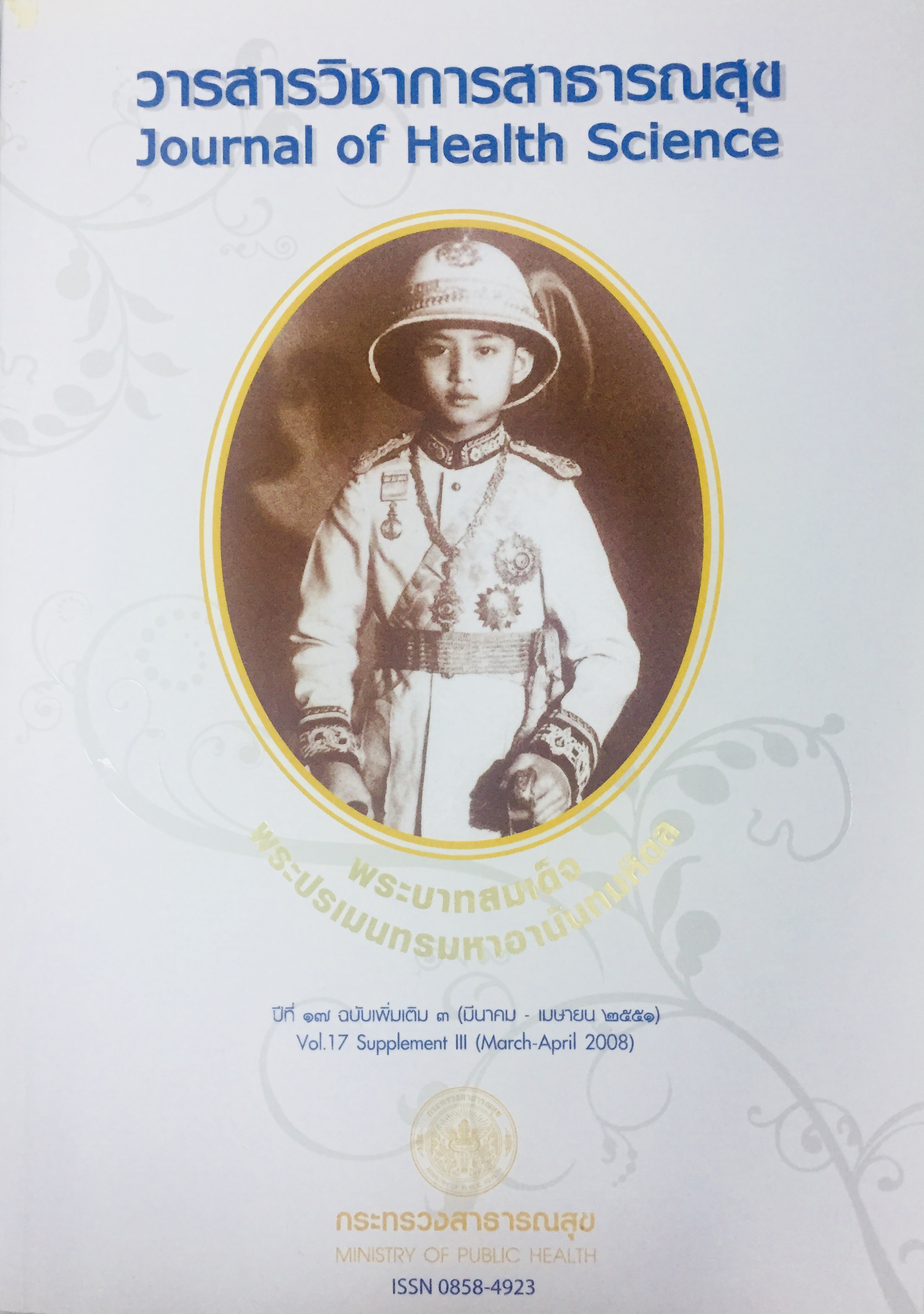ปัจจัยเสี่ยงในโรคไข้เลือดออกที่ช็อกในโรงพยาบาลกาฬสินธุ์
คำสำคัญ:
ปัจจัยเสี่ยง, ไข้เดงกี, ไข้เลือดออก, ไข้เลือดออกที่ช็อกบทคัดย่อ
ไข้เลือดออกเป็นโรคจากไวรัสโดยมียุงเป็นพาหะนำโรค เป็นหนึ่งในปัญหาสำคัญทางสาธารณสุขไทยซึ่ง มีการระบาดตั้งแต่ พ.ศ. 2501 มีอัตราการป่วยและเสียชีวิตสูงโดยเฉพาะผู้ป่วยที่มีภาวะช็อกเป็นเวลานานหรือมีเลือดออกอย่างรุนแรง การทราบถึงปัจจัยเสี่ยงของการเกิดภาวะช็อก ช่วยให้มีการเฝ้าระวังและวินิจฉัยได้ตั้งแต่ระยะแรกจึงมีความสำคัญในการลดการเกิดภาวะแทรกซ้อนและการเสียชีวิต การศึกษาย้อนหลังเชิง วิเคราะห์ เพื่อหาปัจจัยเสี่ยงของการเกิดภาวะช็อกในผู้ป่วยไข้เลือดออกานี้ ทบทวนย้อนหลังเวชระเบียนผู้ป่วยในเด็กของโรงพยาบาลกาฬสินธุ์ระหว่างปี 2547 - 2549 จำนวน 247 ราย เป็นผู้ป่วยไข้เดงกี (DF) 117 ราย ไข้เลือดออก (DHF) 107 รายและไข้เลือดออกที่ช็อก (DSS) 23 ราย เปรียบเทียบข้อมูลทางคลินิกได้แก่ อายุ เพศ อาการ อาการแสดงและผลการตรวจเลือด (CBC) วิเคราะห์ปัจจัยเสี่ยงโดยโปรแกรมคอมพิวเตอร์วิธีวิเคราะห์โดย One Way ANOVA, chi-square test or Fisher's exact test 71 Odd Tatio และ 95% Confidence Interval
ไม่พบความแตกต่างในด้าน อายุ เพศ อาการไข้ ปวดตา ปวดท้อง เลือดออกตามผิวหนัง ระหว่าง ผู้ป่วยไข้เลือดออกที่ไม่ช็อกและช็อกอย่างมีนัยสำคัญทางสถิติแต่พบปัจจัยเสี่ยงของผู้ป่วยไข้เลือดออกที่มีโอกาสช็อก ได้แก่ ผื่น เลือดออกตามไรฟัน ถ่ายดำ อาการอาเจียนเป็นเลือด เกล็ดเลือดน้อยกว่า 50,000 เซลล์ / ลูกบาศก์มิลลิเมตรและความเข้มข้นของเลือดเพิ่มขึ้นมากกว่าร้อยละ 22 ดังนั้นผู้ป่วยที่มีปัจจัยเสี่ยงดังกล่าวควรได้รับการสังเกตอาการอย่างใกล้ชิดเพื่อป้องกันการเกิดภาวะเลือดออก ภาวะช็อกนานเพื่อลดการเกิดภาวะแทรกซ้อนและการเสียชีวิต
Downloads
ดาวน์โหลด
เผยแพร่แล้ว
วิธีการอ้างอิง
ฉบับ
บท
การอนุญาต
ลิขสิทธิ์ (c) 2018 วารสารวิชาการสาธารณสุข

This work is licensed under a Creative Commons Attribution-NonCommercial-NoDerivatives 4.0 International License.







